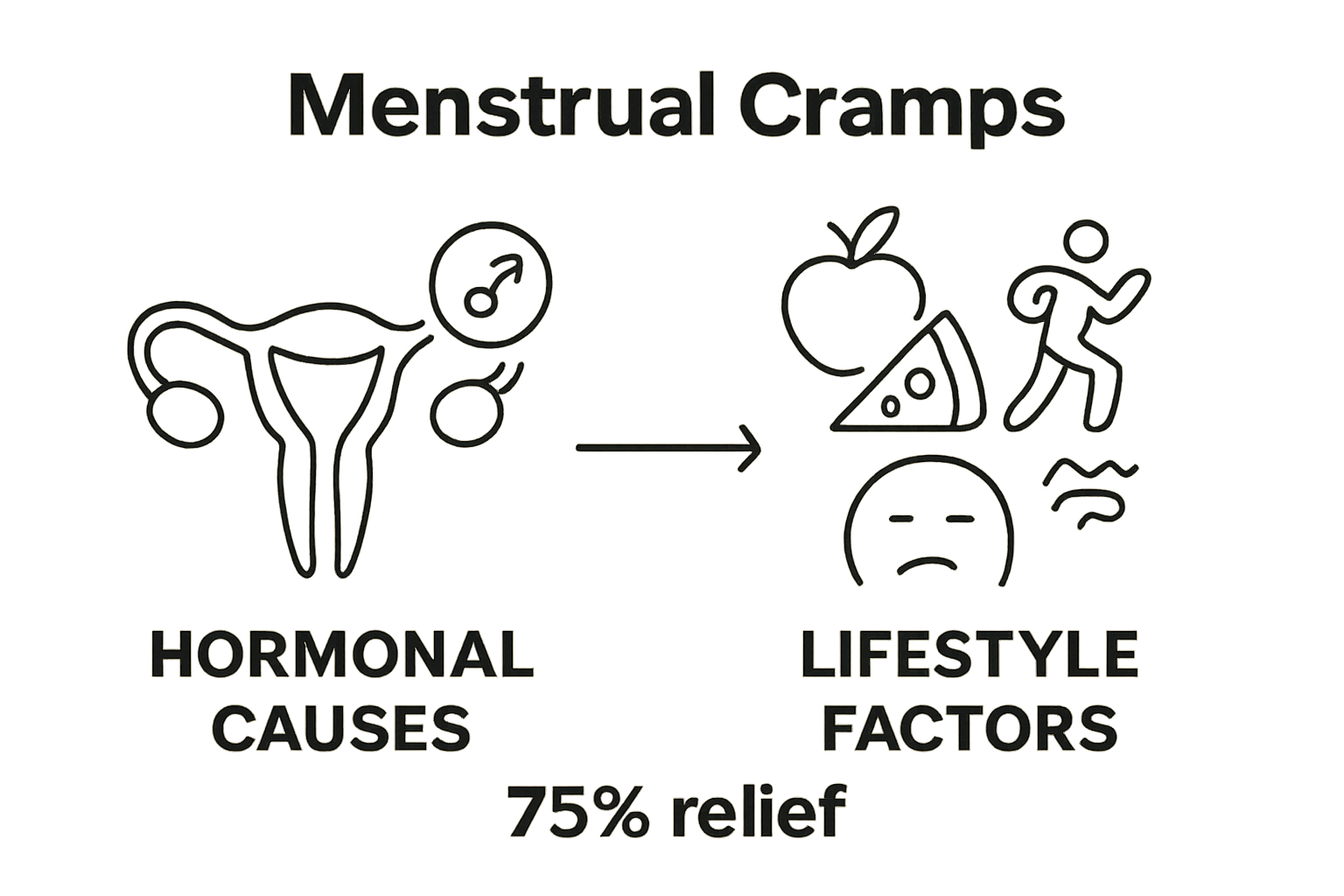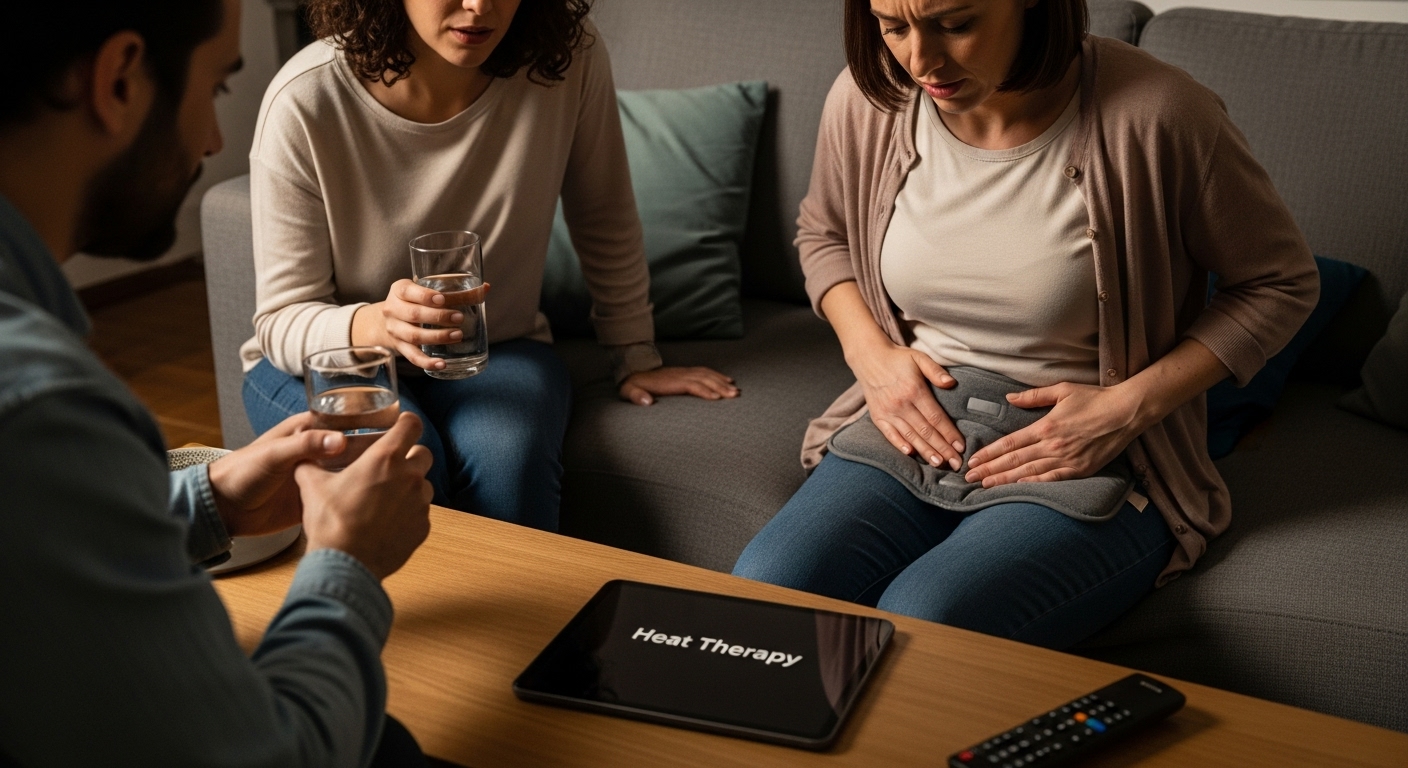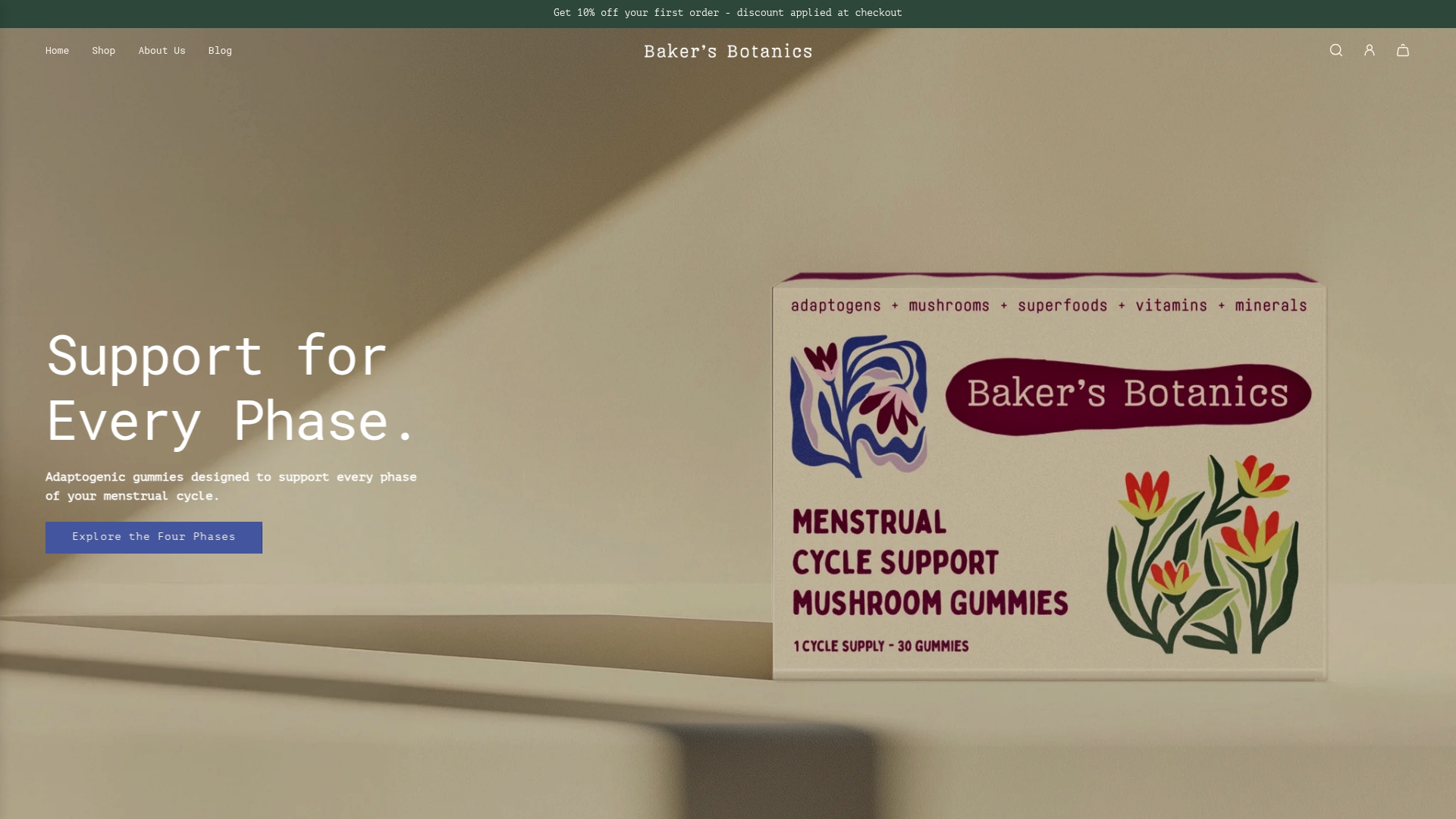Get 10% off your first order.
Sign up to get exclusive offers, product updates, and wellness tips delivered to your inbox.
This store requires javascript to be enabled for some features to work correctly.

Menstrual cramps are more than a minor inconvenience and nearly 90 percent of women experience them at some point in their lives. Most people expect quick fixes like painkillers to be the only solution. But science reveals something surprising. The foods you eat and the way you manage stress can change how much pain you feel each month.
| Takeaway | Explanation |
|---|---|
| Menstrual cramps are common and vary widely. | Dysmenorrhea can range from mild discomfort to severe pain, impacting daily life significantly. |
| Hormonal changes are a key cause. | Prostaglandins trigger uterine contractions, which can cause significant pain depending on their levels. |
| Lifestyle choices can mitigate pain. | Diet, exercise, and stress management can play crucial roles in reducing menstrual cramps. |
| Natural remedies provide effective relief. | Methods like heat therapy and certain supplements can alleviate discomfort and support well-being. |
| Consult healthcare professionals for personalized advice. | Individual responses to treatments vary; professional guidance is crucial for effective management. |
Menstrual cramps are a common experience for many women, characterized by painful sensations in the lower abdomen during menstruation. These cramps, medically known as dysmenorrhea, can range from mild discomfort to intense, debilitating pain that disrupts daily activities.
At the core of menstrual cramps is a complex biological mechanism involving hormonal changes and uterine muscle contractions. During the menstrual cycle, the uterine lining builds up in preparation for potential pregnancy. When pregnancy does not occur, prostaglandins trigger the uterine muscles to contract, helping shed the unnecessary lining.
According to research from the National Institutes of Health, these contractions can cause significant pain due to reduced blood flow and increased inflammatory responses.
Menstrual cramps manifest differently for each individual, but several typical symptoms are widely recognized:
Some women experience more severe symptoms that might indicate underlying conditions like endometriosis or uterine fibroids. If you want to learn more about managing menstrual health holistically, read our comprehensive guide on menstrual wellness.
The intensity of menstrual cramps can vary significantly between individuals. While some women might experience mild discomfort, others face more challenging symptoms that require medical attention or natural intervention strategies.
Below is a table summarizing the common symptoms and their variations in menstrual cramps, helping you quickly compare their presentations and potential severity.
| Symptom | Description | Range of Severity |
|---|---|---|
| Lower abdominal pain | Sharp, throbbing, or aching pain in the belly area | Mild to severe |
| Pain radiating to back/thighs | Discomfort extending from abdomen to lower back/thighs | Occasional to frequent |
| Nausea and vomiting | Feeling sick and possible vomiting during menstruation | Sporadic to intense |
| Headaches | Head pain or migraines accompanying cramps | Occasional to persistent |
| General fatigue | Overall tiredness, low energy during periods | Mild to disabling |
| Dizziness/lightheadedness | Sensation of being faint or unsteady | Rare to moderate |
Menstrual cramps originate from complex biological processes within the female reproductive system, involving intricate hormonal interactions and physiological responses. Understanding these underlying mechanisms provides crucial insights into why women experience different levels of menstrual discomfort.
The primary biological driver of menstrual cramps is the production of prostaglandins, hormone-like substances that play a critical role in uterine muscle contractions. As the menstrual cycle progresses, prostaglandin levels increase, causing the uterine muscles to contract more intensely. According to research from the Mayo Clinic, higher prostaglandin levels correlate directly with more severe cramping.
Beyond prostaglandins, menstrual cramps involve complex interactions between multiple biological systems. Key factors include:
Stress can significantly amplify these biological processes, potentially increasing menstrual pain intensity. Learn more about how stress impacts menstrual health and its complex physiological connections.
Individual variations in these biological factors explain why some women experience more intense menstrual cramps than others. Genetic makeup, overall health, and hormonal balance contribute to the unique experience of menstrual discomfort for each woman.
Hormones are the primary conductors of the complex symphony that orchestrates menstrual experiences, playing a critical role in determining the intensity and duration of menstrual cramps. These chemical messengers interact in intricate ways, influencing everything from uterine muscle contractions to pain perception.
Estrogen and progesterone are the primary reproductive hormones that regulate the menstrual cycle. During the luteal phase, progesterone levels rise, preparing the uterine lining for potential pregnancy. When pregnancy does not occur, a dramatic drop in these hormones triggers the shedding of the uterine lining. According to research from the National Institutes of Health, this hormonal decline directly stimulates prostaglandin production, which intensifies uterine muscle contractions and contributes to menstrual pain.
Hormonal interactions extend beyond simple mechanical contractions. They significantly influence an individual’s pain threshold and inflammatory responses. Key aspects of this complex relationship include:
To better understand how your unique hormonal profile might impact your menstrual experience, learn about tracking your menstrual cycle and gaining insights into your body’s rhythms.
Understanding these hormonal mechanisms helps explain why menstrual experiences can vary dramatically between individuals. The interplay of hormones creates a unique biological fingerprint that determines not just cramping intensity, but overall menstrual health and comfort.
Lifestyle choices play a profound role in managing and potentially mitigating menstrual cramps, offering women opportunities to proactively influence their menstrual experiences through intentional daily practices. Understanding the intricate connections between personal habits and menstrual health can empower individuals to reduce discomfort and improve overall well-being.

Diet emerges as a critical factor in managing menstrual cramps. Inflammatory foods can exacerbate pain, while anti-inflammatory nutrition can help reduce discomfort. According to research from nutrition experts, a diet rich in fruits, vegetables, whole grains, and plant-based proteins can significantly decrease inflammation and potentially reduce menstrual pain intensity.
Regular physical activity and stress reduction techniques offer powerful strategies for managing menstrual cramps. Key lifestyle interventions include:
If you’re seeking comprehensive strategies for managing menstrual discomfort, explore our natural solutions for PMS relief.
Lifestyle modifications are not one-size-fits-all solutions. Individual bodies respond differently, making personalized approaches crucial. By understanding how daily choices impact hormonal balance and inflammation, women can develop targeted strategies to minimize menstrual cramp severity and improve overall reproductive health.
Natural remedies offer women holistic approaches to managing menstrual cramps, focusing on alleviating pain and discomfort through gentle, non-invasive techniques. These methods emphasize supporting the body’s innate healing mechanisms and addressing the root causes of menstrual pain.
Heat therapy stands out as a powerful natural intervention for menstrual cramps. According to research from the Mayo Clinic, applying heat to the lower abdomen can be as effective as over-the-counter pain medications. The warmth helps relax uterine muscles, improve blood circulation, and reduce pain intensity.
 Practical heat applications include:
Practical heat applications include:
Dietary supplements and herbal remedies can play a significant role in managing menstrual discomfort. Certain nutrients have demonstrated potential in reducing inflammation and supporting hormonal balance. Key supplements include:
If you’re interested in exploring comprehensive natural strategies for managing menstrual symptoms, discover our guide to reducing PMS symptoms naturally.
Natural remedies work best when integrated holistically, considering individual body responses and overall lifestyle factors. While these approaches can significantly improve menstrual comfort, consulting healthcare professionals remains crucial for personalized guidance.
To help readers understand the different natural remedies for menstrual cramps, the following table compares key interventions, their primary method, and the benefit they offer.
| Natural Remedy | Approach/Method | Main Benefit |
|---|---|---|
| Heat therapy | Heating pad, warm bath | Relaxes muscles, reduces pain intensity |
| Magnesium supplement | Oral dietary supplement | Reduces inflammation, eases cramps |
| Omega-3 fatty acids | Dietary supplement/food | Decreases inflammation |
| Vitamin E | Oral dietary supplement | May reduce pain, supports balance |
| B Vitamins (B-1, B-6) | Oral dietary supplement | Supports nerve function, reduces pain |
| Gentle physical activity | Yoga, stretching, movement | Boosts circulation, decreases discomfort |
| Herbal remedies | Herbal teas, supplements | Supports hormone balance, relieves pain |
Are you frustrated by menstrual cramps that disrupt your daily life? As covered in our article, common symptoms like sharp abdominal pain, fatigue, and hormonal imbalances often leave you searching for more than temporary relief. If you feel overwhelmed by reliance on synthetic options or want a holistic approach that works with your body, Baker’s Botanics is here for you. Our products are crafted with the same natural principles explored in the article, focusing on inflammation reduction and cycle support using functional mushrooms and herbal blends.

Start your journey toward lasting comfort and hormonal balance. Visit Baker’s Botanics for solutions designed to address the root causes of period discomfort. Curious about what sets us apart? Explore our collection of wellness gummies and menstrual support blends to discover how plant-powered supplements can help you feel your best every cycle. Take action today and experience a natural path to menstrual wellness. Find out more at Baker’s Botanics.
Menstrual cramps, or dysmenorrhea, are primarily caused by the contraction of the uterine muscles, triggered by prostaglandins. These hormone-like substances increase during menstruation, leading to pain and discomfort.
Diet plays a crucial role in managing menstrual cramps. Inflammatory foods can worsen pain, while an anti-inflammatory diet rich in fruits, vegetables, and whole grains may help reduce discomfort and inflammation.
Natural remedies for menstrual cramps include heat therapy—like heating pads or warm baths—and dietary supplements such as omega-3 fatty acids, magnesium, and vitamins E and B-6, which may help reduce inflammation.
Stress can amplify the biological processes that lead to increased menstrual pain. Stress management techniques, such as yoga and meditation, can help reduce the severity of cramps by lowering stress-related hormonal responses.
Sign up to unlock 15% off your first order and get functional mushroom tips, rituals, and product drops straight to your inbox.